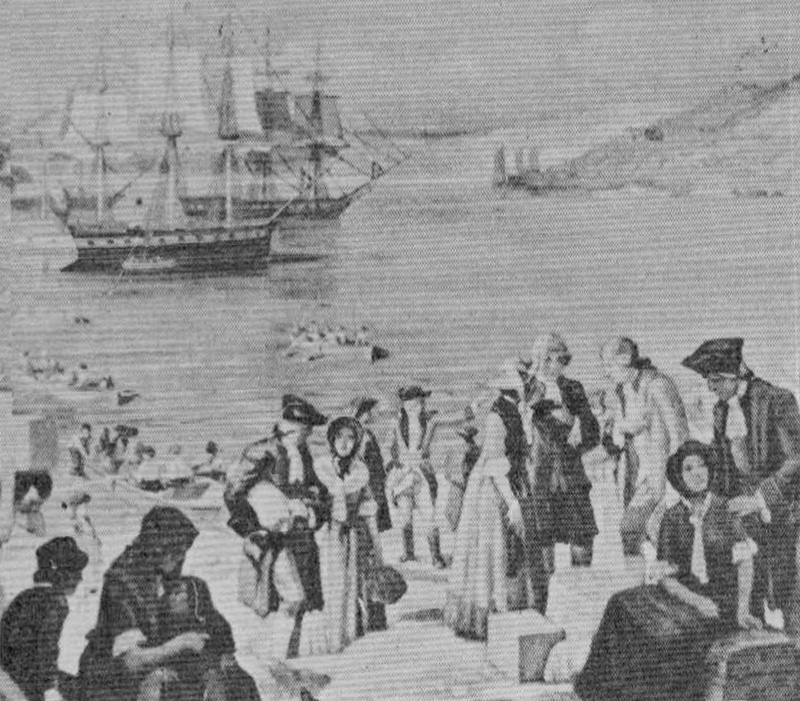
HISTORICAL EVENTS THAT TOOK PLACE ON THIS DAY IN CANADA
4 May

Landing of the Loyalists, 1783
Loyalists Seek New Home
There are many Canadians today who are proud to be descendants of the United Empire Loyalists. They were the people who lived in the United States until the American Revolutionary War led to the break with Britain. Remaining loyal to Britain, they decided to move to Canada, many of them giving up beautiful homes.
Some of them went back to Britain but found it difficult to fit in there. An exception was the famous Boston painter Copley, whose son became Lord Chancellor as Baron Lyndhurst. Another was Benjamin Thompson, who went to live in Germany where he became Minister of War. He created the English Garden in Munich and was eventually made a member of the Institute of France, a fellow member with Napoleon.
George M. Wrong in his excellent history, The Canadians, makes an interesting point. When the American Revolutionary War broke out, there were people in Britain and Canada who favoured the American cause, and spoke out for it. They were not punished.
In the United States, however, those who were against the war were given rough treatment. When the British evacuated Charleston, twenty-four Loyalists were executed. Many more suffered the same fate.
Although Sir Guy Carleton did not finish evacuating New York until November, 1783, the Loyalists began crossing to Canada in 1782. Gradually the trickle built up into a Rood. On May 4, 1783, 471 families from New York landed at Shelburne, Nova Scotia. Eventually, 35,000 Loyalists settled in the Maritime Provinces. Many others went to Upper Canada and turned the scale against Canada's being a predominantly French country.
By 1785, Shelburne had received so many Loyalists that it became a bigger city than Halifax. The British government supplied food and other needs, but when this aid stopped, Shelburne's growth collapsed.
By May 18, 1783, more than 7,000 Loyalists had landed at Saint John. They resolved to make it a greater seaport than New York. It didn't work out that way, but the Saint John River, 400 miles long, provided forest and farmland for settlement. Saint John is known as the "Loyalist City" today.
Another 20,000 Loyalists sailed all the way up the St. Lawrence to Quebec or Montreal, and then made their way to Upper Canada. Others escaped from New York and crossed into the Niagara area.
The Americans never honoured the agreement to repay the Loyalists for their losses. Britain offered partial reparation but payments did not begin until 1790. Until then, the Loyalists in Canada went through some very hard times. Nova Scotia, in particular, was called "Nova Scarcity."
OTHER NOTABLE EVENTS ON THIS DAY IN CANADIAN HISTORY
4 May
-1639 Madame de La Peltrie and others sailed from Dieppe to Quebec:
-1804 Selkirk brought colonists from Isle of Mull, Scotland, to settle at Baldoon, near Chatham, Ontario.
-1859 Parliament prorogued. Offices were moved from Toronto to Quebec.